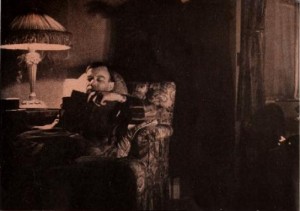
"Among the ten best, The Last Entry, running seven reels 16mm., is one of the most ambitious amateur photoplays ever undertaken and completed. The plot, requiring many elaborate interior sets, is based on a mystery story that opens with a house party. While a room is darkened for the projection of amateur films, one of the guests is murdered and all present may be suspected equally. The detective handling the case uncovers the fact that the murdered man, an author, has lived on blackmail effected by threats of exposure through publication, which throws suspicion on several of the guests of the house party who were discovered to be his victims. However, in the end, the murder is solved by screening the same pictures that were on the projector when it was committed. Although this plot offered great difficulties in the direction of large group scenes, the creation of the necessary lighting effects and the interpretation of the actors' roles, it is beautifully and suavely handled. In the film are several lighting treatments that may be listed as among the most effective ever achieved by amateurs. One chase sequence staged through long corridors, a large, dimly lighted attic and on the roof of the mansion at night in the rain, can be likened only to the effects secured in the best professional mystery photoplays. James F. Bell, jr., ACL, was director with Charles H. Bell, ACL, and Benjamin Bull, jr., ACL, cameramen and Lyman Howe, ACL, in charge of lighting." Movie Makers, Dec. 1932, 537-538.
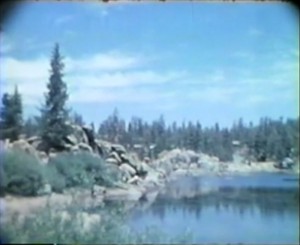
"An edited home movie by Arthur H. Smith of Smith's later years, living with his wife Blanche in Big Bear Lake, California, including a description of his filmmaking process." Archive.org
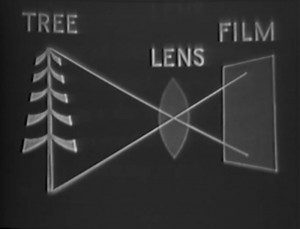
"On use of camera lenses to produce desired photographic effect. Demonstrates functions of different lenses." National Archives.
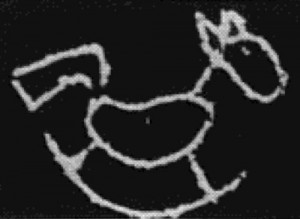
"An abstraction made by scratching patterns on black and white film with a needle. The clear areas were tinted with acetate dyes - thus adding color. The visual images are fitted to the mood and tempo of a commercial recording. The film was made without the use of a camera and required no developing. A novel presentation. This will be blown up to 16mm and will be included in the Package," PSA Journal, Oct. 1962, 35.
Documentary film chronicling the background and production of Dinosaur Dream (1995), which Sid Laverents made in his late-80s with assistance from his wife, Charlotte.
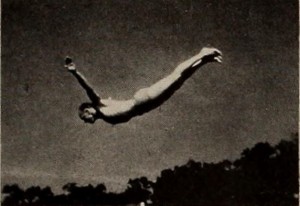
"Henry E. Hird, whose suavity and expertness as a movie maker increase each year, has chosen in his present offering to illustrate one of the cine film's most interesting capacities — its power to analyze motion. Introducing his footage with a lead title assembly finely accomplished with double exposure on moving backgrounds, Mr. Hird has observed and recorded with cinematic sureness such things as what happens when cream is poured into a cup of coffee and is filmed in such manner that the action is greatly slowed down for careful analysis. We watch the mechanics of flying seagulls, in landings and takeoffs. We look at the manner in which crystals are formed from chemical combinations, as well as at opening flowers, by time lapse filming. Smoke rings are shown and there are fine examples of the familiar dives caught in slow motion. Mr. Hird's picture compares favorably with the best slow motion studies of the professional screen, and it presents a number of fresh subjects." Movie Makers, Dec. 1946, 471, 486.
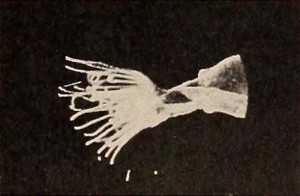
"The eagerness of a movie maker to use a new cine camera is the clever introduction and leitmotivof Movie Bugs, an exceedingly well photographed picture by Dr. Frederick W. Brock. The picture tells how the movie maker protagonist gets in touch with a science teacher and how the two of them construct a support for the camera for use with it in filming through a microscope. The succeeding shots of hydrae and paramecia and other microscopic organisms are beautifully filmed, and the picture infers the obvious conclusion that any university zoology department should be equipped to make such studies. Clean cut interior lighting and a well knit story distinguish this fine filming job." Movie Makers, Dec. 1938, 620.
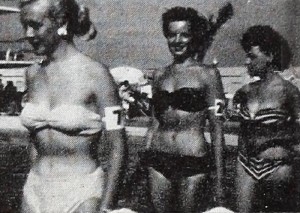
"A bathing beauty parade in Florida, blessing the fishing fleet at Gloucester, a tomato throwing fight in — well, it doesn't matter. These are not, to be sure, true scoops in the journalistic sense of the term. But they do constitute what passes for news these days in the newsreels; and, under George Merz's competent camera treatment and incisive cutting, they most certainly make for good movies. Mr. Merz sustains audience interest throughout Movie News Scoops, working in a film form — the topical newsreel — which the amateur generally has found difficult." Movie Makers, Dec. 1951, 412.
"This film shows Charles Devenish Woodley making a film." Library and Archives Canada.
Total Pages: 9